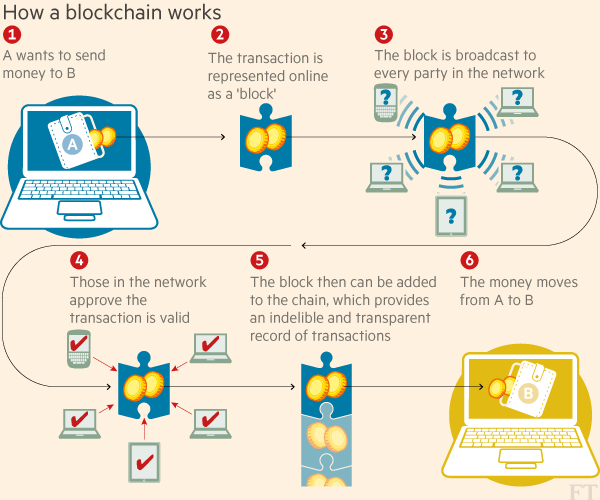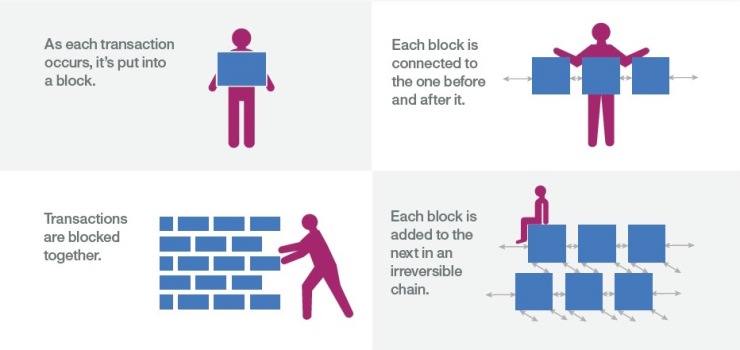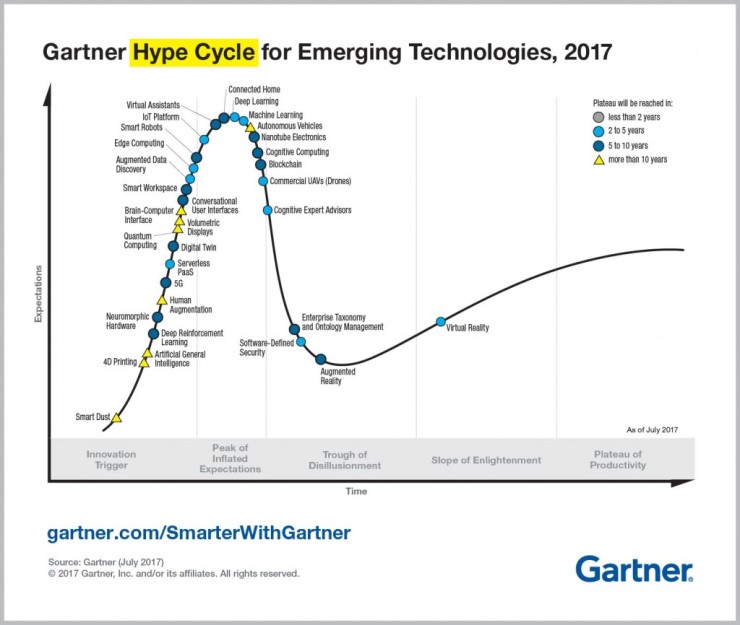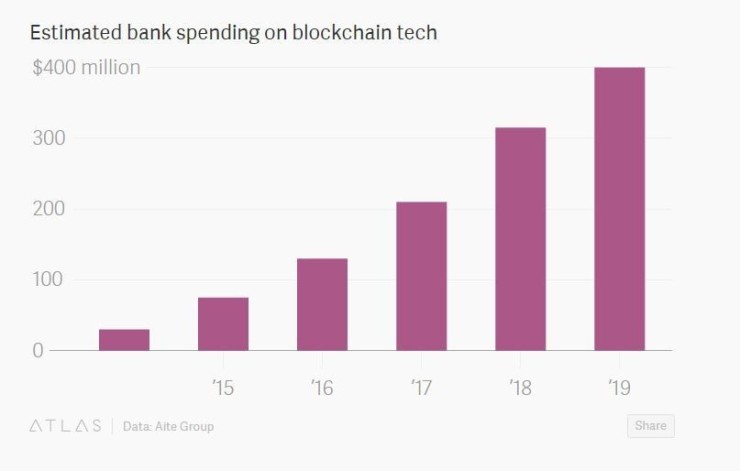In a world seeking to connect all of its data information centres and achieving greater visibility, traceability and transparency, at increasing speed, technological development is the answer. In today’s blog I will elaborate on one of the most popular technological developments of the year 2017: BLOCKCHAIN
The structure of the today’s blog is the following:
- Blockchain Origins
- What is Blockchain & How does it work?;
- Blockchain: is it a hype?
- Advantages & Disadvantages;
- Blockchain in Supply Chain & Logistics;
- The Future of Blockchain
1. Blockchain Origins
Based on the book “Blockchain Revolution” written by Don & Alex Tapscott Blockchain can simply be defined as:
- “An incorruptible digital ledger of economic transactions that can be programmed to record not just financial transactions but virtually everything of value.”
Additionally, a more specific definition of Blockchain according to IBM is:
- “Shared ledger for recording the history of transactions – that cannot be altered”
Now that we know what it is, let us investigate its origins. On September 15 in 2008, the economic crash started due to the bankruptcy of the Lehman Brothers, which at that time had over $639 billion in assets but also a staggering $619 billion in debt. The impact on the world economy was profound due to the fact that Lehman Brothers was the fourth largest investment bank in the United States of America.
![]()
Then on the 31st October 2008, Blockchain technology first emerged as a result of the publication of the white paper called “Bitcoin: A Peer-to-Peer Electronic Cash System” written by Satoshi Nakamoto. In this white paper a new peer-to-peer and decentralised payment and monetary system was introduced by using a digital units of exchange as a currency, called Bitcoin, based on Blockchain technology. Bitcoin is, according to Satoshi Nakamoto:

- [Bitcoin] a purely peer-to-peer version of electronic cash would allow online payments to be sent directly from one party to another without going through a financial institution. Digital signatures provide part of the solution, but the main benefits are lost if a trusted third party is still required to prevent double-spending. We propose a solution to the double-spending problem using a peer-to-peer network. The network timestamps transactions by hashing them into an ongoing chain of hash-based proof-of-work, forming a record that cannot be changed without redoing the proof-of-work.
Basically, the Blockchain distributed ledger would support all cryptocurrency transactions such as Bitcoin. The main advantages of Bitcoin are:
- Send & Receive money (bitcoins) to any worldwide address in less than 10 minutes;
- User Anonymity;
- No 3rd party involvement;
- Very low transfer fees;
- No double-spending;
- Mobile payments.
In the next blog, a more detailed overview and description will be provided to the reader about the cryptocurrencies market.
2. What is Blockchain & How does it work?
I will explain a practical example. The first step is that a person “A” wants to send money to a person called “B”. Once made, the transaction is transformed into a “block” containing information about the sender, amount, and receiver (step 2). Then this block is shared within the network of existing nodes, which validate the transaction and the status of the users by using known algorithms (step 3). The next step is to determine the transaction validity, avoiding double-spending. The entire network has to accept this transaction (step 4). As a result, the unique transaction block is then added to the existing chain, which is basically a database containing a completely transparent and incorruptible record of all transactions previously confirmed and added to the network (step 5). In the end, the money was received from A to B (step 6), in less than 10 minutes (depending on the speed of the network decided by its capacity and it’s existing total number of users).

A verified and accepted transaction can contain the following sources:
- Cryptocurrencies;
- Contracts;
- Data Records.
This is why it is called Blockchain. Each transaction containing one of the data sources mentioned above, is transformed into a block, connected to the chain of previous blocks, added to the network, in an unchangeable and transparent encrypted database record.

3. Blockchain: is it a hype?
According to Gartner’s “Hype Cycle“, published in July 2017, Blockchain is considered to be in the quadrant or phase called “Peak of Inflated Expectations” expected to reach a plateau within 5 to 10 years. This phase is basically the peak of hype of the technological trends. Blockchain is at a stage of the end of the hype “bubble”, very close to reach the quadrant / phase “Trough of Disillusionment“, deflating from initial hype stage.
 4. Advantages & Disadvantages
4. Advantages & Disadvantages
After all this theory, what are the top 5 main advantages, users might experience if they implement and use Blockchain technology? Well, based on the MIT explanation video “Blockchain – A Short Introduction” they are in a nutshell:
- Efficiency
- Auditability
- Traceability
- Transparency
- Security
5. Blockchain in Supply Chain & Logistics
Now lets narrow down our focus to the use of Blockchain in the world of Supply Chain & Logistics. What are the main benefits, added value and in which practical, real-life cases?
1. Smart Contracts
These smart contracts can be between any private or public entities (between people or companies). They can be facilitated by Ethereum, which is a decentralised Blockchain App Platform that runs smart contracts.
A smart contract is based on “if – then” conditions and executes itself when the conditions are met. For example, a manufacturing company called X make a new smart contract with a transportation company called Y on the conditions “IF 30 Full-Truck-Loads (FTL’s) are transported each week, from A to B, with pick-up and delivery at these times, without any delays or damages, for the company X THEN the transportation company Y will receive a compensation of €…… per week / month / year.
With blockchains, automatic contracts (smart contracts) can be set up. Once the conditions agreed upon by the users are met, these smart contracts automatically execute their terms– service payment, shipment authorization, etc.
2. Reduce Transaction Time
Companies can pay contracts and can exchange information among them in record time speed, from months and weeks to hours and minutes being performed on a 24/7 basis.
3. Reduce Cross-Border Costs
According to a study performed by Deloitte, Blockchain can potentially reduce the costs to 2-3% of the total amount and provides guaranteed, real time transactions across borders.
4. Increase Supply Chain Visibility and Security
Blockchain records and stores everything, thus it is capable of tracking the goods flow, increasing the visibility and security of the supply chain by tracing back the raw materials sourcing origin, suppliers of the suppliers, warehouse storage location, quality levels, and financial transactions.
5. Risk Mitigation
Blockchain can actively support with identifying transaction errors when they begin, alerting about validation of inconsistent information, and thus reduce error costs.
6. The Future of Blockchain
The future of Blockchain is solid. According to the “IBM Study: Blockchain Adoption on the Rise” 80% out of 3,000 C-level executives surveyed stated and confirmed that they are already using Blockchain technology or are developing new business models in order to adapt to the upcoming shift in the financial sector.
71% of the surveyed business executives which currently use Blockchain in their firms declared that this technology will play a key role in their business and that they are supporting mass adoption by developing industry standards.
IBM is already implementing Blockchain for seven important European banks such as: Deutsche Bank, HSBC, KBC, Natixis, Rabobank, Societe Generale and Unicredit.
Why the financial sector specifically (banks? Well check these statistics:
- Blockchain potential for reducing bank infrastructure costs – 30%
- Annual savings potential for banks using blockchain technology – $8-12 billion
- Amount the global blockchain market is expected to be worth in 2024 – $20 billion
- Average investment in blockchain projects in 2017 – $1 million
- Amount that IBM is investing in blockchain-powered IOT – $200 million
- Number of employees IBM is dedicating to blockchain powered IOT projects – 1,000 employees
- Percentage of major North American and European banks that are exploring blockchain – 90%
- 9 out of 10 agree that Blockchain is a banking disrupter
In the end, the estimated bank spending on implementing Blockchain, according to the World Economic Forum will be over $300 million in 2018 and $400 million by 2019.

In my opinion Blockchain and Cryptocurrencies are one of the most disruptive technologies after the invention of Internet. They go hand-in-hand.
Their main purpose is to bring decentralised and transparent systems to the people and enterprises in order to facilitate a much more faster transaction process and a much more reliable and consistent collection and storage of information.
I strongly believe that Blockchain technology will be integrated into the Control Towers in their infrastructure in order to collect & store accurate data and manage & monitor 24/7 the End-2-End supply chain greatly facilitating the decision-making process for optimisation, cost and lead-time reduction.
However, I also believe that there are a few challenges to overcome, such as:
- Trust Issues: Unwillingness of companies to openly share information;
- One Standardised Industry Solution;
- Costs of implementation.
I think that Blockchain and Cryptocurrencies, integrated in the overall infrastructure of the supply chain Control Towers will have a great impact and as a result transform the traditional supply chain into the Digital Supply Chain.
1 thought on “Blockchain 101”